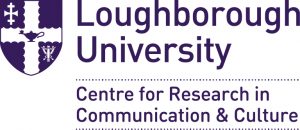
D.N.Deacon@lboro.AC.UKProf John Downey
J.W.Downey@lboro.ac.uk
Dr Emily Harmer
E.Harmer@lboro.ac.uk
Prof James Stanyer
J.Stanyer@lboro.ac.uk
Prof Dominic Wring
D.J.Wring@lboro.ac.uk
The authors are all members of Loughborough University Centre for Research in Communication and Culture which has been analysing media coverage of elections and referenda since 1992.

Section 2: Politics
- The press and the Referendum campaign
- Newspapers’ editorial opinions during the referendum campaign
- Brexit ‘mansplained’: news coverage of the EU Referendum
- Scrutinising statistical claims and constructing balance: television news coverage of the 2016 EU Referendum
- Regulated equivocation: the referendum on radio
- Referendum night goings on
- The view from across the pond: Brexit on American media
- A victory of the nation state: the EU Referendum in the Southern European press
The Referendum was always going to pose significant challenges for those covering the campaign. When the battle lines became clearer, it was obvious that news organisations could not resort to established practices derived from their reporting of electoral contests. With the Party so divided, the “Tory press” had to decide which Conservatives they preferred. Broadcasters had to assess whether inclusion of participants beyond the governing party risked introducing new imbalances in their coverage given the other significant parties wholly or mainly endorsed staying in the EU.
three issues dominat(ed) media debate: the economy, immigration, and the conduct of the campaign itself… (whereas) Devolution attracted less than 1% of news coverage. Given their clear Remain majorities and the future implications for both Scotland and Northern Ireland this is a remarkable absence
The Centre for Research in Communication and Culture audited national news coverage of the Referendum between 6 May and 22 June. We analysed the main weekday bulletins on BBC1, ITV, Channel 4, Channel 5 and Sky News, as well as a representative sample of pages from the print editions of all ten UK national daily newspapers. Our purpose was to measure three balances: the extent to which coverage favoured one or other position (‘directional’), the amount of coverage given to the respective campaigns (‘stopwatch’), and the range of issues covered (‘issue’).
Directional balance
One measure for discerning press alignment involved subtracting the volume of items that advanced the IN position from the total that supported OUT. This enabled us to position different newspapers on an ‘opinion continuum’. To varying degrees, five newspapers favoured IN and five OUT. Overall there was a greater volume (60 to 40%) of articles supporting OUT over IN. When these figures are weighted by sales, this advantage is far larger (80% versus 20% in favour of OUT).
Pro-IN and Pro-OUT newspapers gave more prominence and quotation space to IN and OUT campaigners respectively. In TV terms none of these clear directional tendencies were evident. Analysis of 482 TV news items found a small surplus of 28 IN orientated items over OUT items. There was also much greater parity in the broadcasters’ presentation and quotation of competing viewpoints.
Stopwatch balance
Table 1 compares the amount of times parties, corporate and civil society representatives were featured in news coverage. The results show the dominance of Conservative sources, particularly in the pro-OUT newspapers. Business sources were most prominent in Pro-IN newspapers. TV news gave far greater prominence to reporting and quoting the views of citizens. Where there was marked consistency was in the marginalisation of other parties. Labour’s presence was boosted by increased prominence during the last two weeks of the campaign. UKIP (mainly its leader) sustained some media presence but the other parties were side-lined. The era of multi-party politics witnessed by us in last year’s General Election found scant expression in coverage of this campaign.
Reporting was highly ‘presidential’. The top five most frequently reported participants were David Cameron (8.9% of all appearances), Boris Johnson (6.7%), George Osborne (4.0%), Nigel Farage (3.2%) and Michael Gove (2.8%). Cumulatively these individuals accounted for more than one in four of all media appearances.
Issue balance
Table 2 compares which issues gained the most coverage in the press and TV news.
There was remarkable consistency in issue coverage across the media (i.e. TV, and pro-IN and OUT newspapers), with three issues dominating media debate: the economy, immigration, and the conduct of the campaign itself. Figure 2 shows the relative prominence of the ‘Economy’ and ‘Immigration’.
Initially the economy received considerably more attention than immigration, potentially to the benefit of the IN campaign. Later there was, however, a significant shift with immigration overtaking economic issues and this may have given the OUT campaign valuable momentum. Subsequently, while the economy regained pole position, there was closer proximity between the two main substantive issues in the closing stages of the campaign than at the start.
The marginalisation of many other major issues including the environment, taxation, employment, agricultural policy and social welfare was striking. Devolution attracted less than 1% of news coverage. Given their clear Remain majorities and the future implications for both Scotland and Northern Ireland this is a remarkable absence.
The authors would like to thank Jon Crannage, Charlotte Hester, Simon Huxtable, Sarah Lewis, Nadilla Mohamed-Jamil, Amanda Overend, David Smith, Lukas Stepanek, Ian Taylor, Dane Vincent and Judy Wing for their invaluable assistance.






